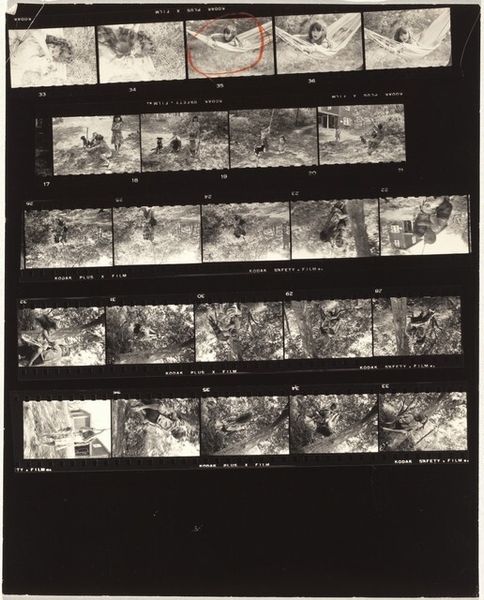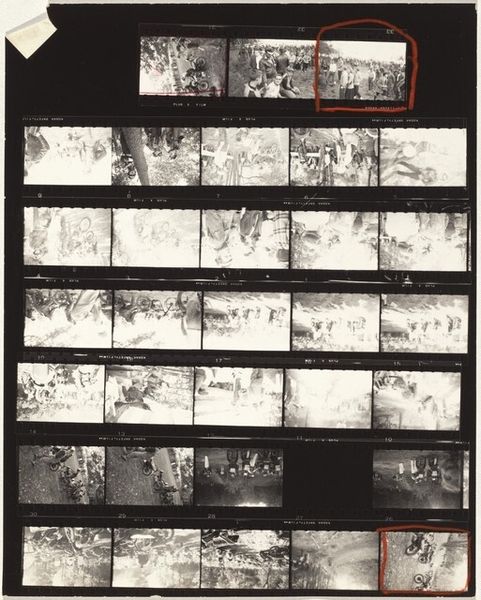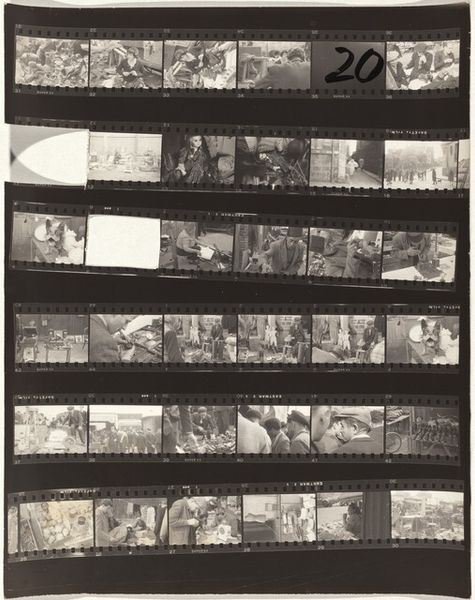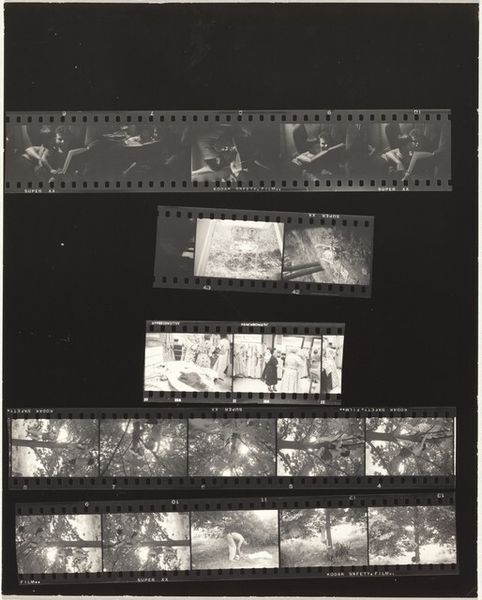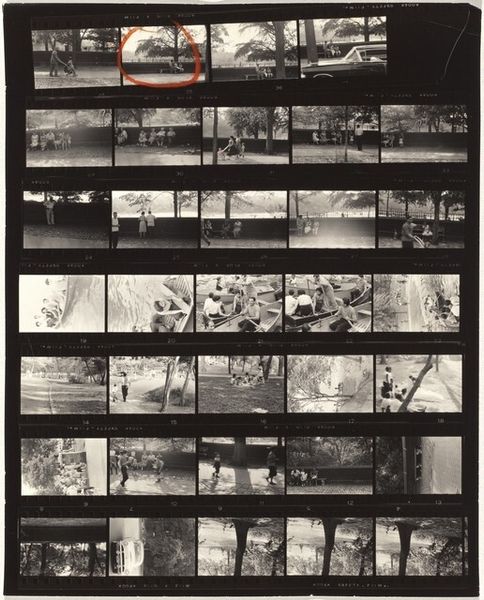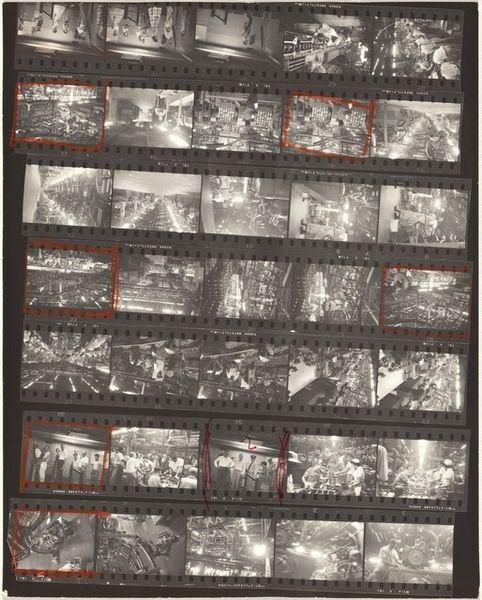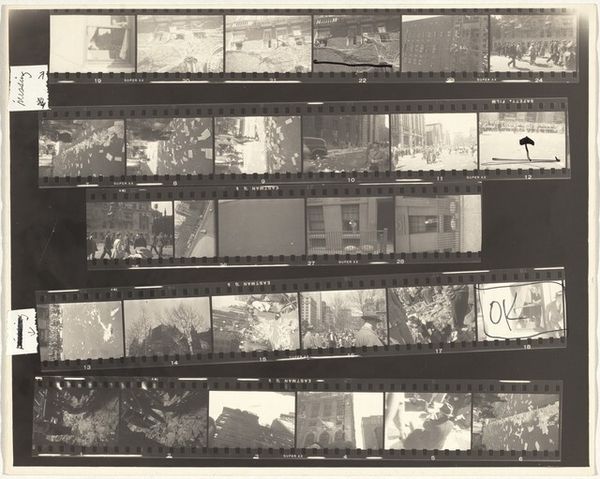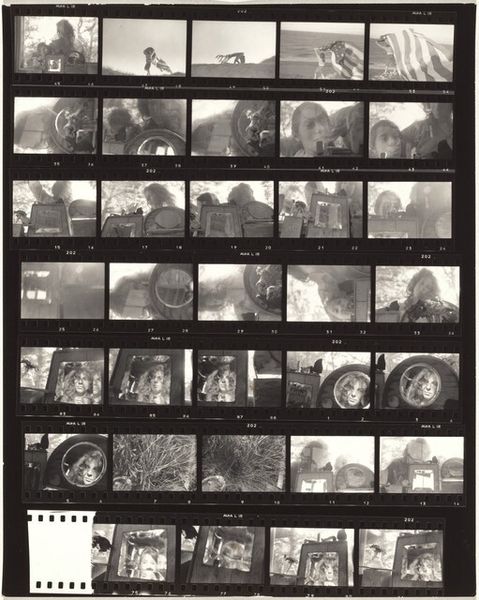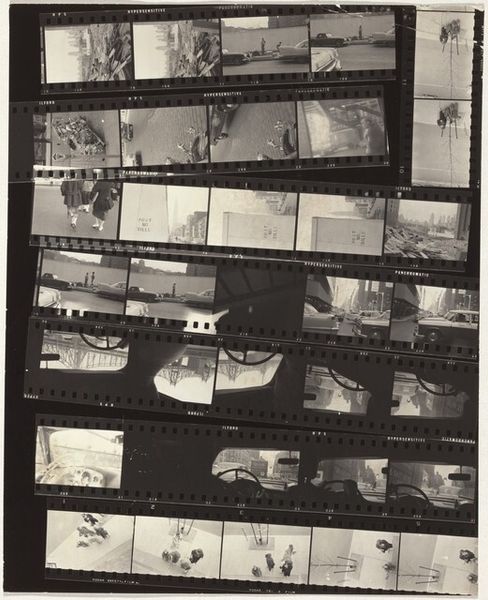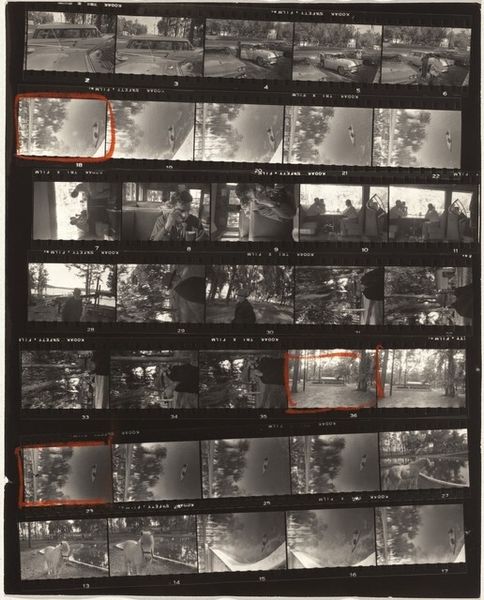
Dimensions: sheet: 25.3 x 20.2 cm (9 15/16 x 7 15/16 in.)
Copyright: National Gallery of Art: CC0 1.0
Curator: Gosh, this whole contact sheet practically hums with lost afternoons. Editor: It feels wonderfully voyeuristic, doesn’t it? All those fleeting moments captured. It's a gelatin silver print titled “Weekend at Uribe’s house no number" from 1953, by Robert Frank. The layout shows us, quite plainly, how a photographer's mind might have worked at that time. Curator: The filmstrip format certainly makes you ponder all that invisible intention and rejection. What story sits right here among these seemingly disparate moments, you think? Editor: Absolutely. Each frame feels like a fragmented memory, a piece of something larger. See all of those children gathering… group dynamics are fascinating. In every culture, playing often has roots in ancient social roles. The postures, the interactions... they seem familiar in some indefinable way. Curator: Mmm, children caught in their own element; pure unselfconscious experience unfolding frame by frame. The high-contrast, gritty quality gives everything this wonderfully dreamlike but somehow real energy. This has always been so evocative, to me! And it really does create a lasting feeling, one that speaks to themes such as innocence. Editor: Indeed, Robert Frank often worked with this documentary style that gave a real snapshot of everyday lives. Looking closely I think that feeling of seeing fragments adds weight to what he ultimately was hoping to convey; as it’s up to us, maybe, to build the true narrative, and connect on an intrinsic and empathetic level. Curator: It becomes about our own projected memories and how that relates to this new material, which will, hopefully, be a very poignant one. Thank you for lending me a hand. Editor: Likewise. Delving into those nuances brings us to the real beauty of interpreting historical artworks, don't you think?
Comments
No comments
Be the first to comment and join the conversation on the ultimate creative platform.
